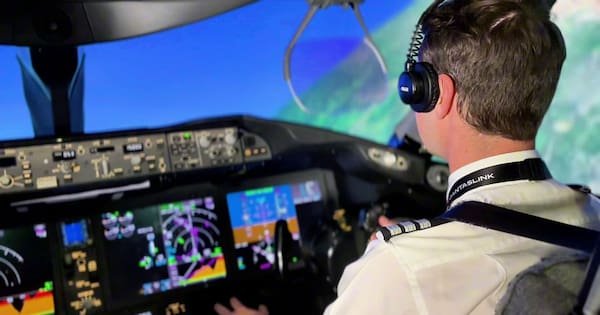Global pilot shortage takes off as travel costs rise

The aviation industry is grappling with a severe pilot shortage, which experts predict will reach between 34,000 to 50,000 pilots by 2025, and could soar to 80,000 by the end of the decade. The shortage is driving up travel costs and presenting significant challenges for airlines worldwide.
Australia correspondent, Aziz Al Sa’afin, investigates how the shortage is impacting the Asia-Pacific region and how one Australian airline is addressing the issue by recruiting New Zealand pilots.
How did we get here?
Whether it’s flying to Queenstown or Europe, demand for seats on planes is high. However, while air traffic is increasing, ticket prices remain elevated and have not returned to pre-Covid levels.
Factors such as the ongoing war in Ukraine, which has contributed to rising fuel prices, and a depleted workforce are also to blame.
The pandemic forced many experienced pilots into early retirement.
One of the world’s leading aviation experts Geoffrey Thomas said: “Covid caused the loss of 46 million jobs in aviation and tourism across the globe and it’s been an exceedingly hard job getting those folks back.”
The race for recruitment
Airlines around the world are now in a race to get more pilots on board before it is too late.
Jetstar, for example, is currently undertaking its biggest pilot recruitment drive in New Zealand in the past 15 years.
Jetstar’s Chief Operating Officer Matt Franzi said: “In New Zealand we’ve had over 20% growth in pilots in the past 12 months which is really exciting for us.”
The airline, in partnership with Qantas, offered new recruits streamlined programmes to get flight hours up and more recruits into the industry.
Senior pilot Ian Griggs said: “[Previously] in this part of the globe we didn’t do cadetships, you didn’t have pilots coming through the ab initio stages, people would go into general aviation, they would learn to fly turbo prop, or instruct, and find themselves in the lower tier airlines and find themselves in a jet operation.”
Griggs praised the quality of pilots, particularly from New Zealand, coming through cadet programmes.
“As a trainer and checker, some of the pilots that we see come through those cadet programmes, they’re incredible. What they are taught and what they learn is just absolute gold, they fit into the business really well and they can fly.”
Air New Zealand has also just announced a partnership with Ansett Aviation Training and AeroGuard Flight Training Centre to deliver a customised Cadetship programme, addressing what has widely been described as a “pathway problem” in New Zealand.
The Mangōpare Air New Zealand Pilot Cadetship will commence from September 2024, with cadets set to receive training in the United States of America (Phoenix, Arizona) and United Arab Emirates (Dubai).
Thomas is calling on other airlines to do the same. He said in the past, legacy airlines were not doing enough to train and retain pilots.
“We do have to reassess pilot salaries, we have to give them great security, we have to give them better remuneration, and we have to reverse the trend that has been going on for quite some time,” he said.
Thomas added that post-pandemic, aviation remained vulnerable, and future-proofing was essential to ensure stability.
With fewer pilots available, airlines have been cutting back on flight schedules, leading to more delays and cancellations.



